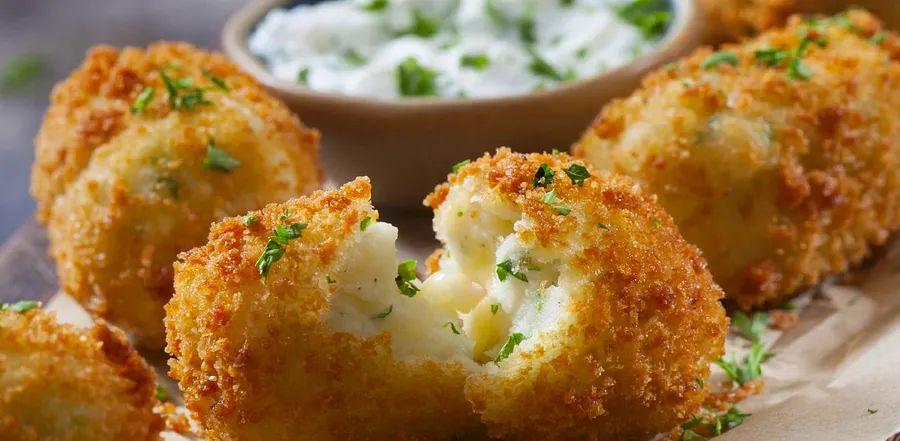What makes a croquette so irresistible?

Whether you've enjoyed tapas in Spain, sampled bar snacks during happy hour, or snacked from food trucks across Europe, chances are, you've tasted a croquette. This beloved snack has even found its way onto fine dining menus as a stylish side dish to the main course.
This crispy, golden treat is more than just a crunchy exterior with a rich, creamy filling. It embodies all the warmth and satisfaction of comfort food, often repurposing leftover bits in the most delicious way.

What exactly is a croquette?
Generally, a croquette is a deep-fried sphere or roll made from a mixture of meat, vegetables, and wheat. Creamy ingredients like béchamel sauce or mashed potatoes serve as the binding agent, while the crispy coating is typically made from breadcrumbs. The mixture is allowed to cool, then shaped into balls, small logs, or round patties, before being battered and fried to achieve a golden, crunchy exterior.
Often enjoyed as a snack or appetizer, croquettes are usually served hot, accompanied by a dipping sauce or mustard. While they can be paired with soups or other dishes to create a well-rounded meal, croquettes also stand alone as a satisfying main course—either piled high and covered in sauce or, when formed into patties, placed between slices of bread for a sandwich.
The Origins
The term 'croquette' likely derives from the French verb croquer, meaning 'to crunch'. France has various theories about the croquette's history within the country. Some claim that Louis XIV’s personal chef documented a version of them in 1691, while another story suggests that French chef Antonin Carême prepared them for a royal banquet in 1817.
What we do know for certain is that the croquette didn’t appear in the United States until the late 1800s. While their global popularity has led to many regional variations, croquettes continue to be cherished worldwide, with local ingredients shaping each version.
What ingredients go into a croquette?
Croquettes can be crafted from a variety of ingredients, finely chopped and blended to suit different tastes. Some versions highlight a single key ingredient, while others feature a medley of flavors.
Common meat fillings include minced beef, pork, chicken, or various sausages. Popular vegetables are mashed or chopped potatoes, peas, and cabbage. Fish, especially cod, is also frequently used, and some croquettes are simply filled with cheese. Spices, eggs, and even black pudding can be added. While some versions might include fillers like extra breading or diced vegetables to stretch the mixture, traditional croquettes avoid such additions.
Spanish croquettes often feature fillings like cod, chicken, or ham (known as croquetas de Jamón). Cheese, octopus, and mushrooms are also common ingredients in these flavorful bites.
In Japan, there's a popular variation called korokke, typically made with mashed potatoes and served with a savory tonkatsu sauce.
In Belgium, croquettes are often made with shrimp mixed into the béchamel. In the UK, they are typically a potato-based dish, rarely containing meat. In South America, minced fish or chicken is common, while in Europe, beef or sausage is the more traditional filling. Asian versions often highlight vegetables as the main ingredient.
Croquettes vs. Fritters
The debate between croquettes and fritters can be a bit contentious online, but generally speaking, fritters are more loosely formed, whereas croquettes are typically molded into specific shapes like patties, balls, or cylindrical logs.
Fritters are made by dipping ingredients into a batter before frying, resulting in a light, airy texture. Croquettes, on the other hand, are coated with flour, egg, and breadcrumbs, forming a crispy shell that surrounds a rich and creamy filling inside.

1

2

3

4

5
Evaluation :
5/5